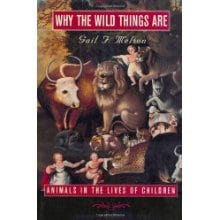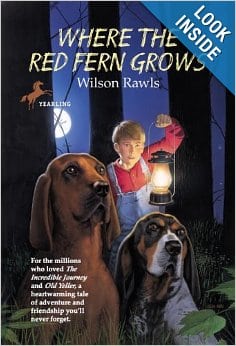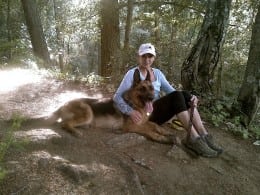How Animals Reveal Character in Children’s and Young Adult Fiction
by Christine Dowd
 So many children’s novels illustrate the powerful bond between the protagonist and his or her animal companion that I could not possibly begin to name them all. But the sheer number of them illustrates how popular they are with children. Incorporating animal companions into your novels can add depth and dimension to your stories. By fully using animals in your stories to reflect your characters’ emotions, you can deepen the emotional impact on your reader and provide a lens through which your reader can glimpse the true nature of your characters.
So many children’s novels illustrate the powerful bond between the protagonist and his or her animal companion that I could not possibly begin to name them all. But the sheer number of them illustrates how popular they are with children. Incorporating animal companions into your novels can add depth and dimension to your stories. By fully using animals in your stories to reflect your characters’ emotions, you can deepen the emotional impact on your reader and provide a lens through which your reader can glimpse the true nature of your characters.
 In Gail E. Melson’s book, Why the Wild Things Are: Animals in the Lives of Children, Melson states that animals are, “crucial to the human imagination and to the successful passage of children through adolescence and into adulthood.”
In Gail E. Melson’s book, Why the Wild Things Are: Animals in the Lives of Children, Melson states that animals are, “crucial to the human imagination and to the successful passage of children through adolescence and into adulthood.”
In his book, Animals in Young Adult Fiction, Walter Hogan states that, “The process of growing to mature adulthood can be enormously enriched by attentive interactions with the animals, both wild and domesticated, that populate the adolescent’s world and await his discovery.” (Hogan 217)
In Lara’s Gift, by Annemarie O’Brien and in Where The Red Fern Grows, by Wilson Rawls, the animals depicted serve not merely as companions for the central characters, but as a mirror reflecting them, a means of revealing them, and illuminating something essential about them as individuals. Fully used by the author, the animals depicted in these novels also propel the characters into action that leads the protagonist to self- discovery. Thus, the animal companion serves as the catalyst to change in the characters.
While I focus on two novels that involve dogs, any animal, even a fantasy creature, can work well in children’s and teen literature to reveal your characters.
 In Lara’s Gift, Lara’s beloved dog, Zar, serves as a mirror reflecting Lara’s determined spirit. Lara’s dream is to follow in her father’s footsteps and be kennel steward for the raising of Borzoi hunting dogs worthy of the Tsar. But in pre-revolutionary Russia, this position is traditionally passed down from father to son. When Lara’s mother gives birth to a baby boy, Lara sees her dream of being kennel steward slip away.
In Lara’s Gift, Lara’s beloved dog, Zar, serves as a mirror reflecting Lara’s determined spirit. Lara’s dream is to follow in her father’s footsteps and be kennel steward for the raising of Borzoi hunting dogs worthy of the Tsar. But in pre-revolutionary Russia, this position is traditionally passed down from father to son. When Lara’s mother gives birth to a baby boy, Lara sees her dream of being kennel steward slip away.
Lara knows that if she is ever to be kennel steward, she must first experience the hunt, but both Lara and her dog Zar are equally disadvantaged. Zar is excluded from the hunt because he is the runt of the litter, and Lara because she is a girl. Both must prove themselves capable and worthy.
The following passage shows Lara’s determined spirit through Zar.
“With my shoulders back, my chin up, and Zar at my side, I harnessed my most serious, grown-up voice. Tyatya, now that I’m fourteen, take me on a wolf hunt. Teach me what I need to know.” Zar pawed at my leg and goosed me with his long snout. “Zar’s ready too.”
“Hunting’s a man’s world.” Papa extended an outstretched arm over Borei, Bistri, and Sila. “With fine, fast, powerful dogs like these three.”
“Zar’s likely to be just as fine, if given the chance,” I said. “Don’t forget that Borei, Bistri, and Sila are his littermates.” (O’Brien 19)
Zar’s action of goosing Lara mirrors her own persistence. Both sense the excitement around the hunt, because it is in their blood, even though the other characters in the novel do not see this yet.
Further into the novel, we see the symbiotic relationship between Lara and Zar when they must both climb onto the old mare, Babushka’s back. This is not a particularly important moment in the novel, as the important action has just taken place, yet the author uses it to deepen our knowledge of character.
It is critical when hunting wolves for the dogs to be able to leap onto a horse’s back. This passage shows Zar’s determination as well as Lara’s, as Zar struggles to get onto the mare.
Alexander tightened his hold on Babushka’s reins and repeated the hand signal. She snorted and pawed the ground with her hoof, before eventually obeying.
“You can do it, Zar!”
This time, Zar took a few steps backward, and then in one leap, he landed square on Babushka’s rump, carrying his head high. Once he was settled, Alexander raised his hand and Babushka stood up. With his fingers locked together, Alexander held them out for me as a human ladder. “Your turn.”
“I, too, must do it by myself,” I said. (O’Brien 32-33)
In this scene, Lara and Zar mirror one another in their eagerness to prove themselves.
Both Lara and Zar have similar plot lines. Lara must take risks just as Zar, as the runt, must prove himself worthy of the hunt. Zar is limited by his size just as the protagonist is limited by her position in society.
But Zar’s presence in Lara’s life propels Lara into action. Alexander, the count’s son and Lara’s friend, convinces Lara’s father to allow Zar to participate in the hunt. Lara sneaks onto the sled without anyone knowing.
Zar ultimately proves to be a superior hunter, as Lara proves capable of handling the hunt. Part of Lara’s growth as a character involves the pain of letting Zar go, despite her love for him. But it is she who decides to send Zar to Tzar Nicholas as a gift, and this action shows the reader her true inner strength and proves her worthy of her dream. Both girl and dog also mirror one another at the novel’s end as they are both changed when Lara’s father declares Lara kennel steward, despite tradition, and Zar evolves into the prize of his litter, proving himself a superior hunter, despite his size.
 We see a similar theme of determination in Where The Red Fern Grows. Through hard work, and perseverance, ten-year-old Billy, the son of a poor farming family in the Ozarks, saves enough money to make his dream come true of owning dogs to hunt coons with.
We see a similar theme of determination in Where The Red Fern Grows. Through hard work, and perseverance, ten-year-old Billy, the son of a poor farming family in the Ozarks, saves enough money to make his dream come true of owning dogs to hunt coons with.
But while “Old Dan,” and “Little Ann” are Billy’s beloved hunting dogs, they also serve to reveal a great deal about Billy as a character.
Like Lara in Lara’s Gift, determination is a major theme that is echoed throughout the novel-it is determination that earns Billy his dogs. The author shows Billy’s determination through Billy’s actions, but reinforces this trait in Billy through Billy’s dogs. Like Billy, his dogs never give up on the hunt, no matter how challenging. Even Little Ann, much smaller than Old Dan, displays perseverance in treeing the coons.
While the novel depicts Billy’s love for his dogs, the dogs serve the larger purpose of revealing his character. They propel Billy to surmount more and more difficult challenges that test his perseverance, and the perseverance of his dogs.
Two scenes exemplify this well:
When Billy is attacked by a group of bullies in town as he is returning home with his pups, he fights back after one of the boys hurts one of his pups.
Freckle face pulled the ear of my little girl pup. I heard her painful cry. That was too much. I hadn’t worked two long hard years for my pups to have some freckle-face punk pull their ears. Swinging the sack from my shoulder, I walked over and set it down in a doorway. As I turned around to face the mob, I doubled up my fist, and took a Jack Dempsey stand.
Freckle-face said, “So, you want to fight.” He came in swinging.
I reached way back in Arkansas somewhere. By the time my fist had travelled all the way down to the Cherokee Strip, there was a lot of power behind it. Smack on the end of Freck’s nose it exploded. (Rawls 39-40)
This passage reveals Billy’s tenacity. Though outnumbered, Billy does not back down. Towards the novel’s end, this earlier scene is echoed when Old Dan and Little Ann save Billy’s life by fighting a mountain lion. Billy tells us,
I never saw my dogs when they got between the lion and me, but they were there. Side by side, they rose up from the ground as one. They sailed straight into those jaws of death, their small red bodies taking the ripping, slashing claws meant for me. (Rawls 226)
Old Dan fights until Billy has to pry his jaws from the lion. Like Billy with the bullies, Old Dan and Little Ann never back down, even though they are no match for the lion any more than Billy is a match for the bullies.
Billy’s dogs sacrifice themselves for Billy just as Billy sacrifices himself for his dogs. Through the death of Old Dan and shortly after, Little Ann, as in their hunting adventures, the dogs enable Billy to move forward. In life, his dogs propelled him to become a better hunter. In death, they help him move forward in his life, better equipped as a result of having experienced love and the pain of loss.
In a literal sense, the dogs function to propel Billy to action that in turn enables his growth. On a metaphorical level, they reflect and echo his characteristics. The red fern that grows between his dogs’ graves is a great symbol that goes beyond character traits. The red fern represents the sacredness of the bond between Billy and his dogs, since, according to Cherokee legend, only an angel can plant a red fern.
When you consider the numerous accounts about heroic dogs that have rescued people, or that have served as service dogs for the blind, or the military, it’s no wonder that they have made their way so prevalently into our fiction. The countless books written about dogs are a testimony to the important role they play in our lives and the lives of our children. Dogs remain an eternal symbol of loyalty and friendship.
 While there are hundreds of great quotes about dogs, this one by Max de Pree really struck me:
While there are hundreds of great quotes about dogs, this one by Max de Pree really struck me:
“We are alone, absolutely alone on this chance planet: and amid all the forms of life that surround us, not one, excepting the dog has made an alliance with us.”
If you intend to use an animal in your fiction, think about how you can make that animal reflect your characters in a meaningful way and in so doing, give your reader a deeper insight into them. There are innumerable ways in which to do this effectively. Do it your way.
 Christine Dowd is a graduate from the Vermont College of Fine Arts Writing for Children and Young Adults Program. She loves to read fantasy, has a killer story waiting to be published, and enjoys hiking in the hills of California with her dog, Romeo.
Christine Dowd is a graduate from the Vermont College of Fine Arts Writing for Children and Young Adults Program. She loves to read fantasy, has a killer story waiting to be published, and enjoys hiking in the hills of California with her dog, Romeo.
Thank you, Christine Dowd for sharing some of your thoughts from your graduate lecture at Vermont College of Fine Arts. We look forward to reading about Orion, your magical horse and the journey Astrea makes with him to realize her dreams.
For great books about dogs, check out 101 Best Dog Books for Kids.
For published authors and unpublished authors, check out our writing contests.


